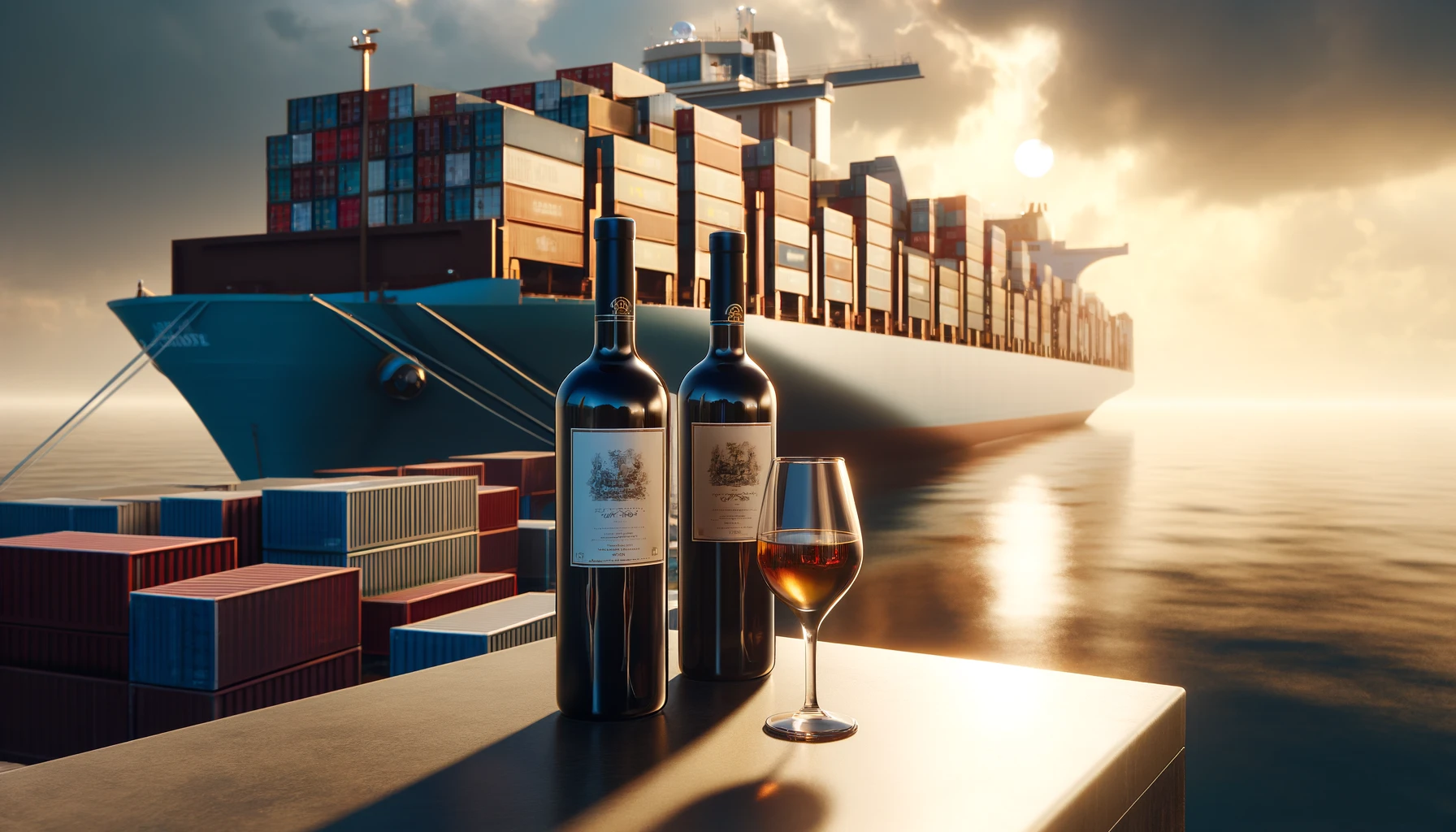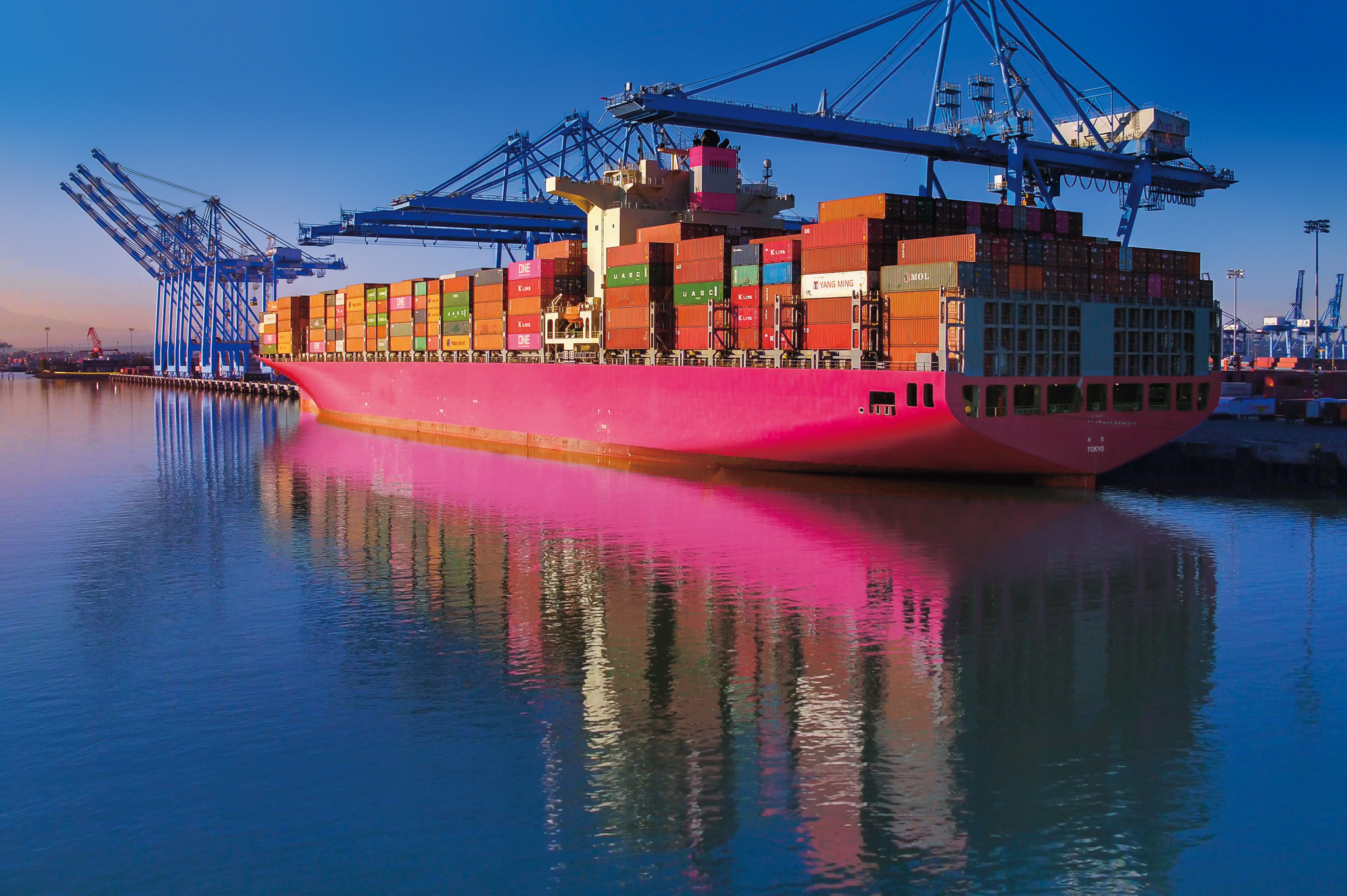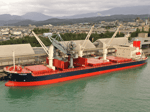Wine Transportation by Dry Container: A Qualitywise & Cost-Effective Solution

In this blog, we will spotlight the innovative service provided by our Italian subsidiary: applying Thermal Insulation Sheets in Dry Container Transport.
<International wine transport>
Wine is sensitive to temperature fluctuations, when it comes to ensuring consistent conditions throughout the transport at an optimal temperature, the ideal conditions can vary depending on the type of wine, generally hovering around 15°C.
It is said that strict temperature control at 15°C is best achieved through reefer container transport, however, it's also worth noting that 90% of wine transported from Italy is done so using dry containers. Upon inquiring about the temperature during transport and storage from several wineries, it was suggested that it's desirable to not exceed room temperature of 25°C-28°C. Consequently, it's common practice to opt for dry container transport over reefer containers.
When utilizing dry containers for transport, shippers often take measures such as avoiding summer shipments. However, when shipping wine from Italy to Japan, particularly through the Suez Canal, the route may traverse hotspots like off the coasts of Egypt, Saudi Arabia, or regions near the equator around Singapore. Additionally, the current shipping route often involves a route around the Cape of Good Hope, crossing the equator twice.
To reduce the impact of temperature extremes inside the containers, some containers might stowed below deck on container ships. Nevertheless, at transshipment ports, containers are frequently exposed to direct sunlight in container yards. Hence, regardless of the shipping season, it's crucial to keep in mind that there will be temperature fluctuations during cargo transitions and transport.
Temperature fluctuations during transport present a significant challenge, as these fluctuations can directly affect the quality of the wine.
<Overview on applying Thermal Insulation Sheets>
Our subject service is based on factors such as the temperature at the origin and destination during the shipment, the route (including transshipment ports), and the container stowage location on the shipping vessel. By combining the strong matches of containers with Thermal Insulation Sheets, we can ensure the transportation undergoes within optimal ambient temperatures.
The Thermal Insulation Sheets, tailored for wine transportation, are installed inside the container to prevent commodities from overheating and thermal damage due to abrupt temperature changes. For wines that demand strict temperature control or when quality is paramount, we strongly recommend transportation using reefer containers.
We position the service as an 'intermediate solution between dry containers and reefer containers.' When evaluating the decision between using a Reefer container or a Dry container with Thermal Insulation Sheets, it's important to consider the differences between the two services.
<Experiment on Effects>
The manufacturer of the Thermal Insulation Sheets experimented to monitor temperature changes inside the container, resulting in the following findings:
▼Comparative Analysis on Temperature Fluctuations
|
|
With Thermal Insulation Sheets | Without Thermal Insulation Sheets |
| Min temp. in container | 8.3℃ | -4.4℃ |
| Max temp. in container | 33.8℃ | 47.3℃ |
| Temp. Difference | 25.5℃ | 51.7℃ |
※Source: Provided by the manufacturer (LAKLINE)
When comparing the use of Thermal Insulation sheets to not using them, according to the provided data: there is a difference of 13.5°C in maximum temperature and a difference of 12.7°C in minimum temperature.
Next, let's explore why the subject Thermal Insulation Sheets are highly effective and distinguish the distinctions from conventional insulation sheets.
<Difference Between Heat-proof Material & Thermal Insulation Material>
People frequently confuse heat-proof materials with Thermal Insulation materials, yet they perform distinct functions. A crucial point of divergence lies in their approach to heat transfer.
To start, heat transfer is categorized into 3 mechanisms:
◆Concerning the 3 mechanisms of heat transfer:
- Conductive heat: The transfer of heat when substances are in direct contact.
(I.e. A metal spoon heating up in warm soup.) - Convective heat: The transfer of heat where heat is carried by the movement of liquids or gases.
(I.e. Heating a room using a heater, which relies on convective heat.) - Radiant heat: The emission of heat as electromagnetic waves, primarily infrared radiation.
(I.e. Feeling warmth from the sun is an example of radiant heat.)
Furthermore, it is estimated that approximately 75% of the temperature inside a container is attributed to radiant heat.
◆Difference Between Heat-proof Material & Thermal Insulation Material
As previously mentioned, given the 3 mechanisms of heat transfer, materials are designed to specialize in each. Here are the distinct characteristics of Heat-proof Material & Thermal Insulation Material:
◆Heat-proof Materials
Heat-proof materials primarily focus on preventing conductive heat transfer. They are typically made of porous materials that contain air, which acts as a barrier to heat flow. Essentially, the effectiveness of insulation increases with the thickness of the air layer, enhancing its ability to impede heat transfer.
◆Thermal Insulation Material
Thermal Insulation materials aim to reduce heat intrusion from sunlight by blocking radiant heat. Typically made from highly reflective aluminum materials, which reflect solar heat to minimize heat transfer. The use of high-purity aluminum foil enhances the material's reflective properties. Unlike heat-proof materials, Thermal Insulation materials do not require thickness because they reflect heat on the surface of the aluminum foil.
These distinctions make Thermal Insulation sheets suitable for blocking radiant heat during container transport.
Heat-proof Material: Primarily focuses on blocking heat conduction.
Thermal Insulation Material: Aim to reduce heat intrusion from direct sunlight by reflecting / blocking radiant heat emission.
Maximizing the Application of Thermal Insulation Materials
Proper utilization of Thermal Insulation materials can significantly enhance their effectiveness, in contrast, incorrect application may result in minimal impact. The key to applying the materials correctly lies in mitigating the impact of "conductive heat."
Thermal Insulation materials, typically thin aluminum foil, quickly absorb heat when exposed to it. Consequently, they excel at blocking heat transfer when directly confronted with heat.
To maximize their efficiency during container loading, it's crucial to create an air gap, to avoid direct contact between the container walls, Thermal Insulation sheets, and the cargoes.
At MOL Logistics Co., Ltd., our experienced staff meticulously ensure that container walls, Thermal Insulation sheets, and cargoes remain separated, thereby optimizing the performance of Thermal Insulation materials.
<Pros and Cons>
Below is a summary of the advantages and disadvantages of using the subject service:
|
|
Dry container with Thermal Insulation Sheets |
Dry container |
Reefer container |
|
PROS |
|
|
|
|
CONS |
|
|
|
To preserve the quality of wine, it's vital to consider temperatures at departure and arrival points, the said route (including transshipment port), and the container stowage location on the vessel.
At MOL Logistics Co., Ltd., we propose and implement the following measures:
- Avoid shipping wine during summer. Instead, we could arrange for an overnight cargo collection within Italy, with transportation by truck to warehouses in the morning, minimizing temperature fluctuations caused by direct sunlight exposure.
- Opt for routes that avoid transshipment ports like Singapore or Dubai, selecting routes with direct shipment or transshipment in relatively cooler regions to prevent temperature spikes at terminal ports.
- Specify underdeck stowage for containers on the vessel (instead of on deck) to prevent containers from being exposed to direct sunlight during ocean transit.
With our expertise in hygiene management, temperature control, and customs clearance, particularly in food transportation such as wine, we stand ready to address any concerns you may have. Please don't hesitate to reach out to us!
<LCL Options for Commodities Like Liquid Chemicals, Resins, Soap, and Pet Food are available too!>
We've introduced Wine Transportation and our logistics solution in this blog. What are your thoughts?
Our innovative approach integrates Thermal Insulation sheets within dry containers, effectively balancing quality preservation with cost efficiency. If you're looking for a transportation solution that prioritizes both quality preservation and cost-effectiveness, our service stands as the perfect fit.
While we've used wine as an example here, the subject service extends beyond just beverages to include food, liquid chemicals, resins, soap, and pet food transportation.
Additionally, we extend our top-tier service to LCL transportation, ensuring consistency across all shipment sizes, not limited to FCL. For further details and quotations, please don't hesitate to reach out!






